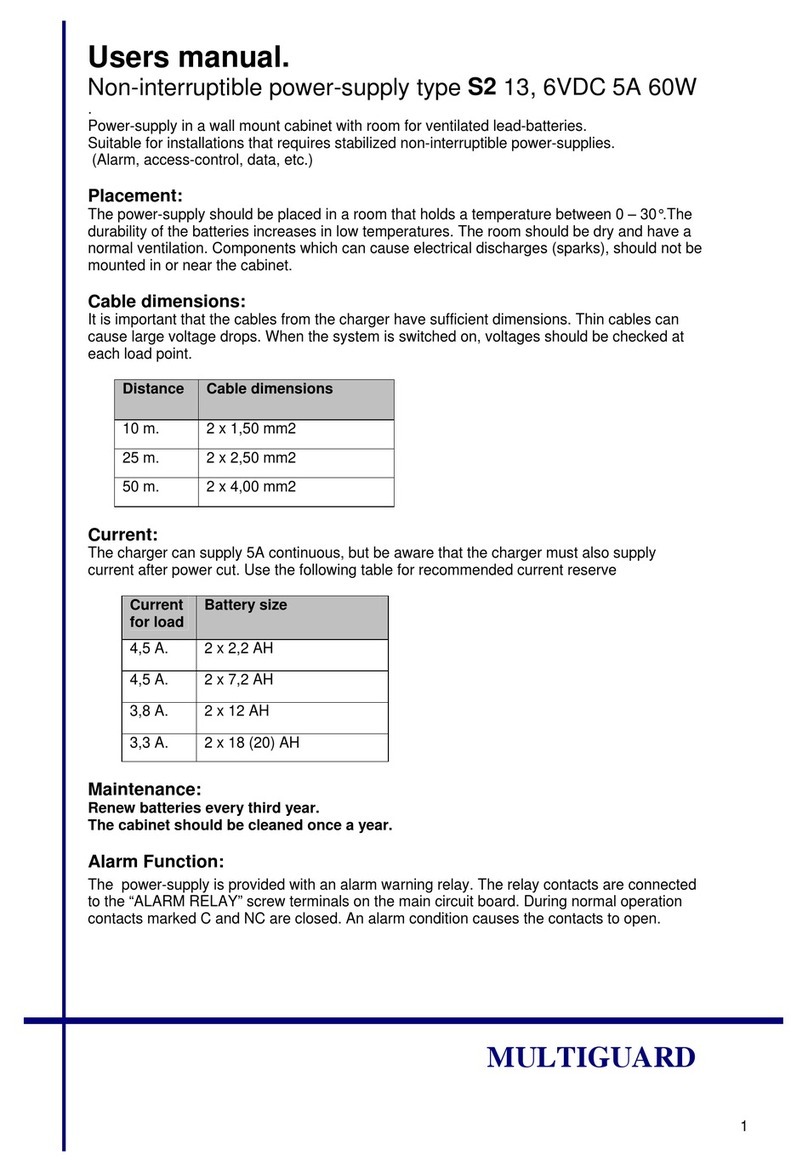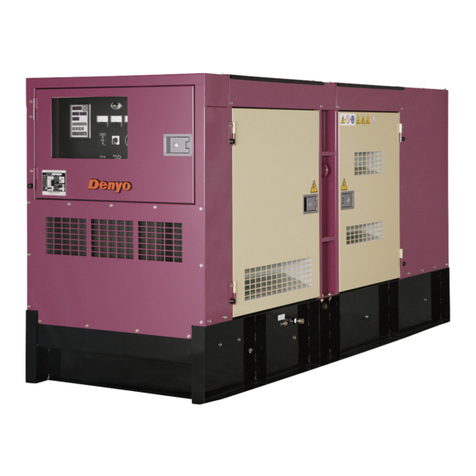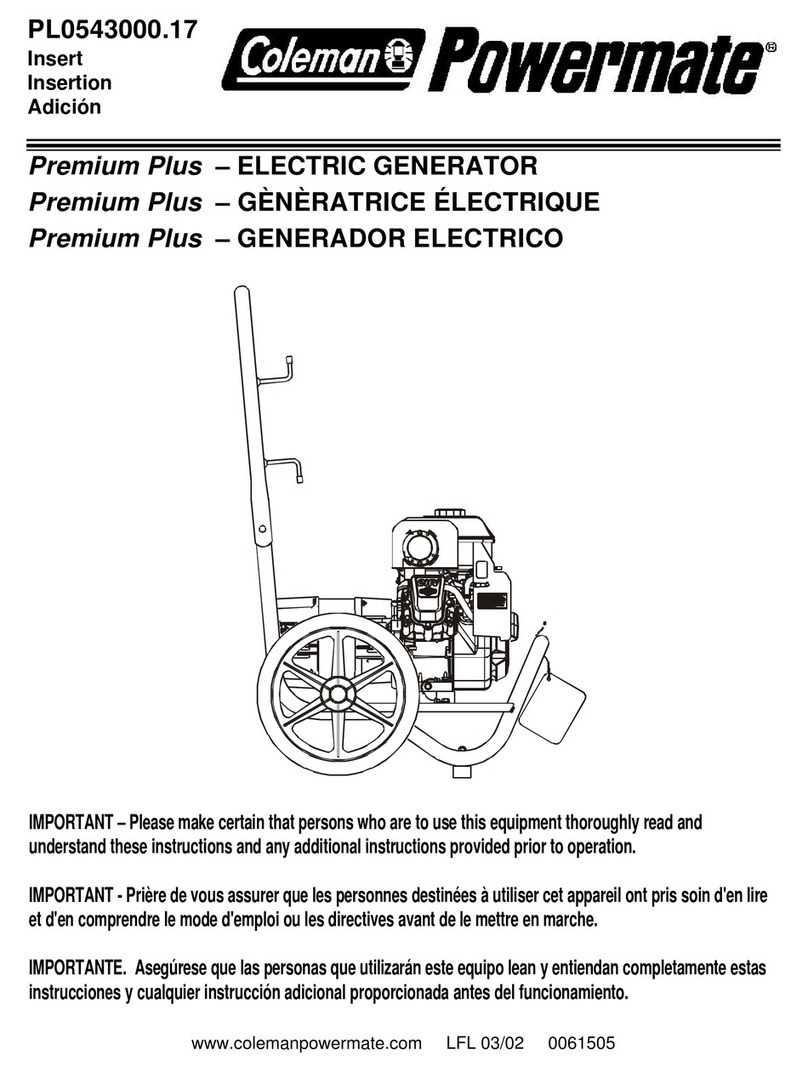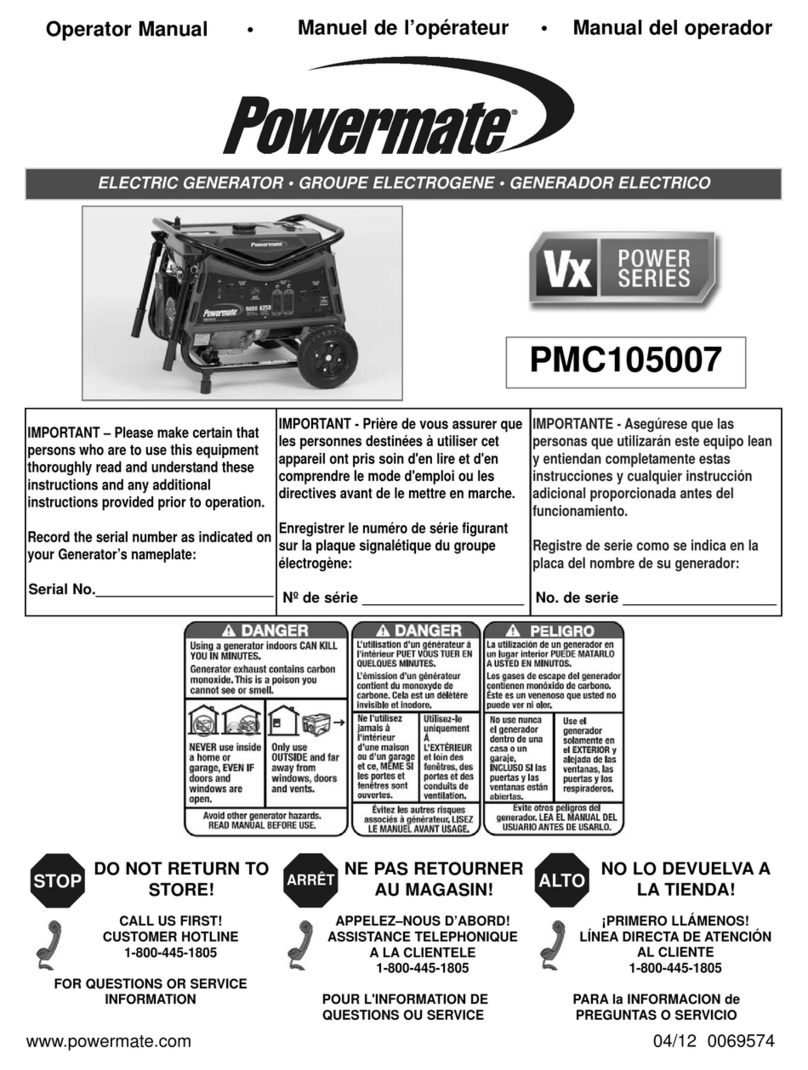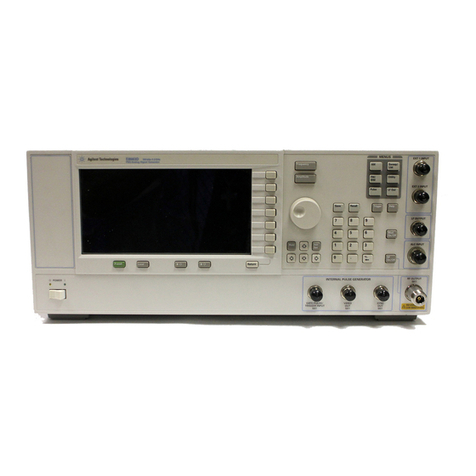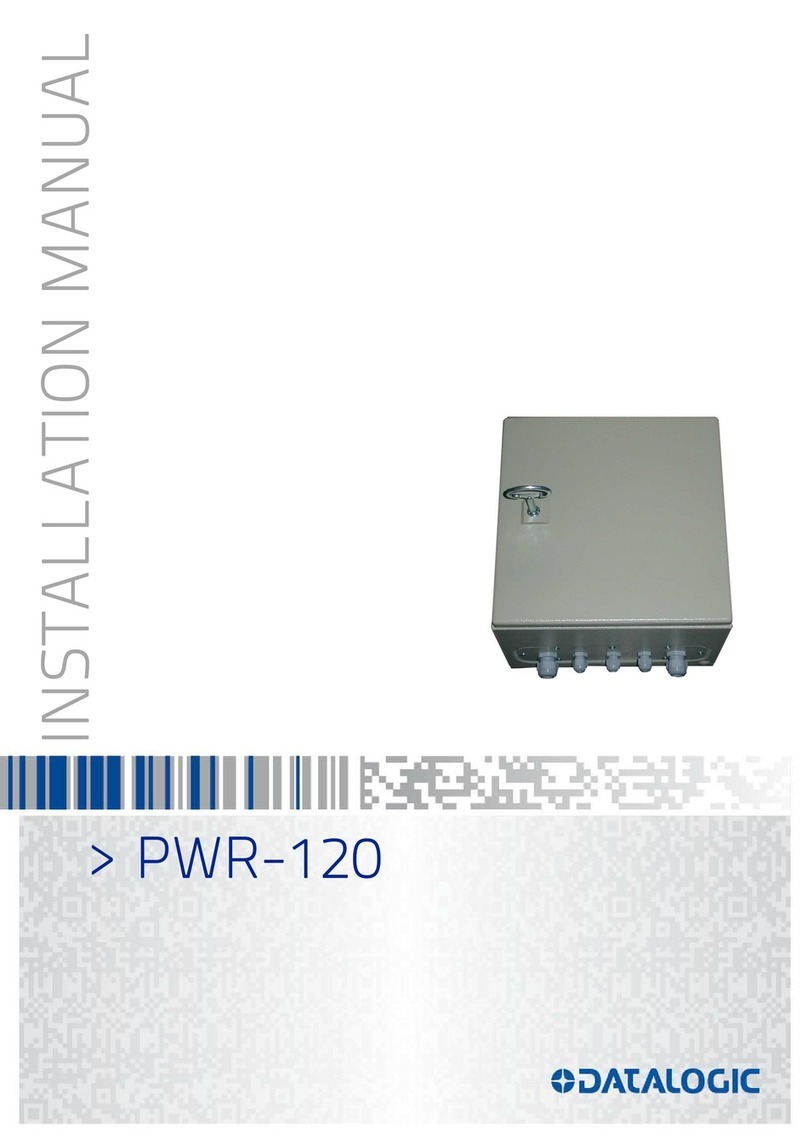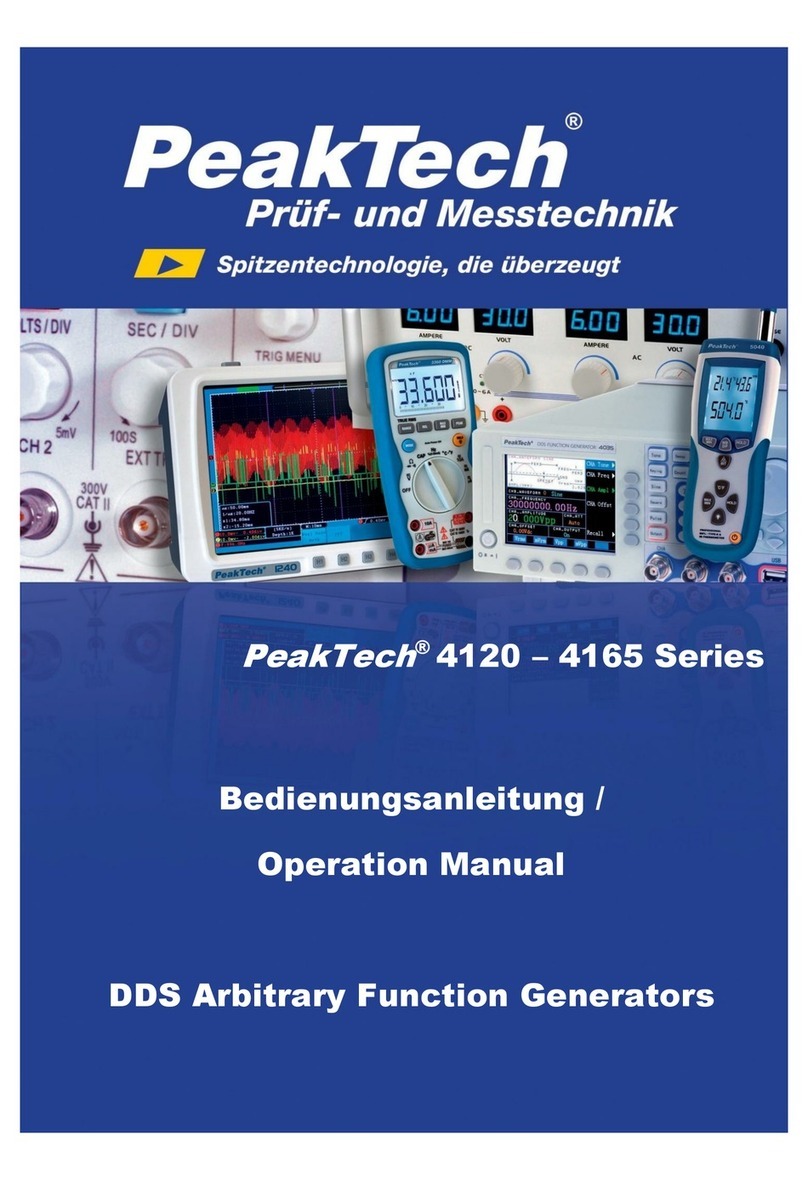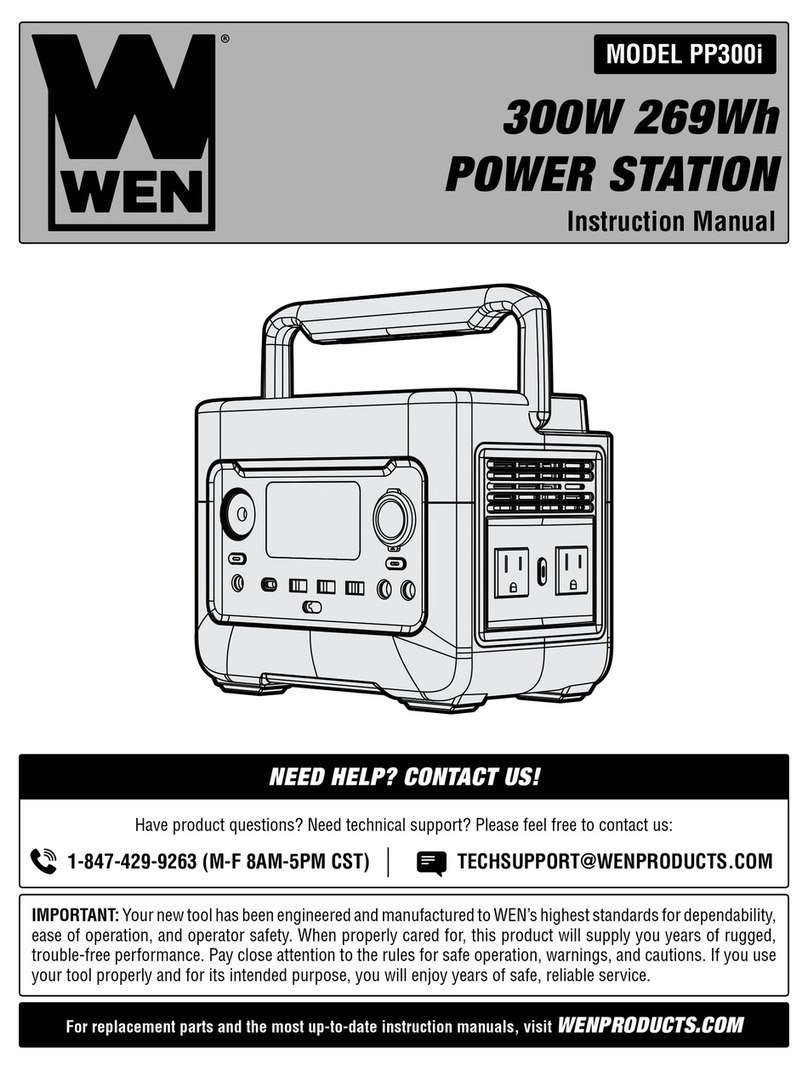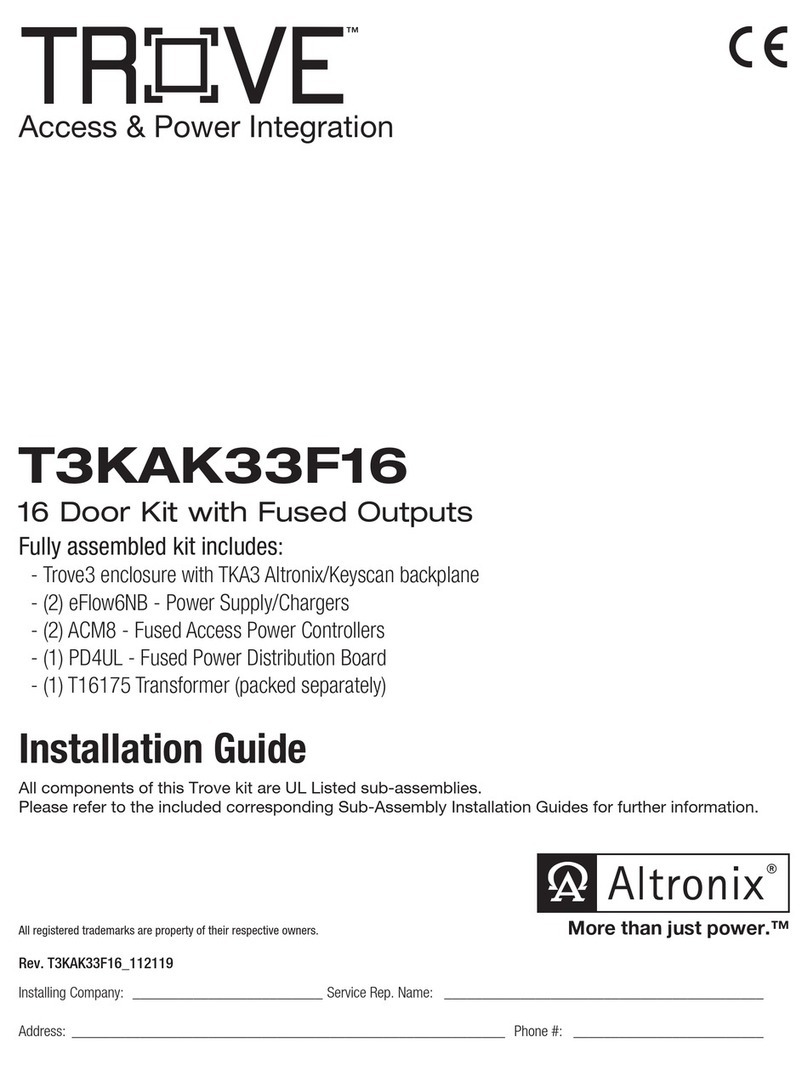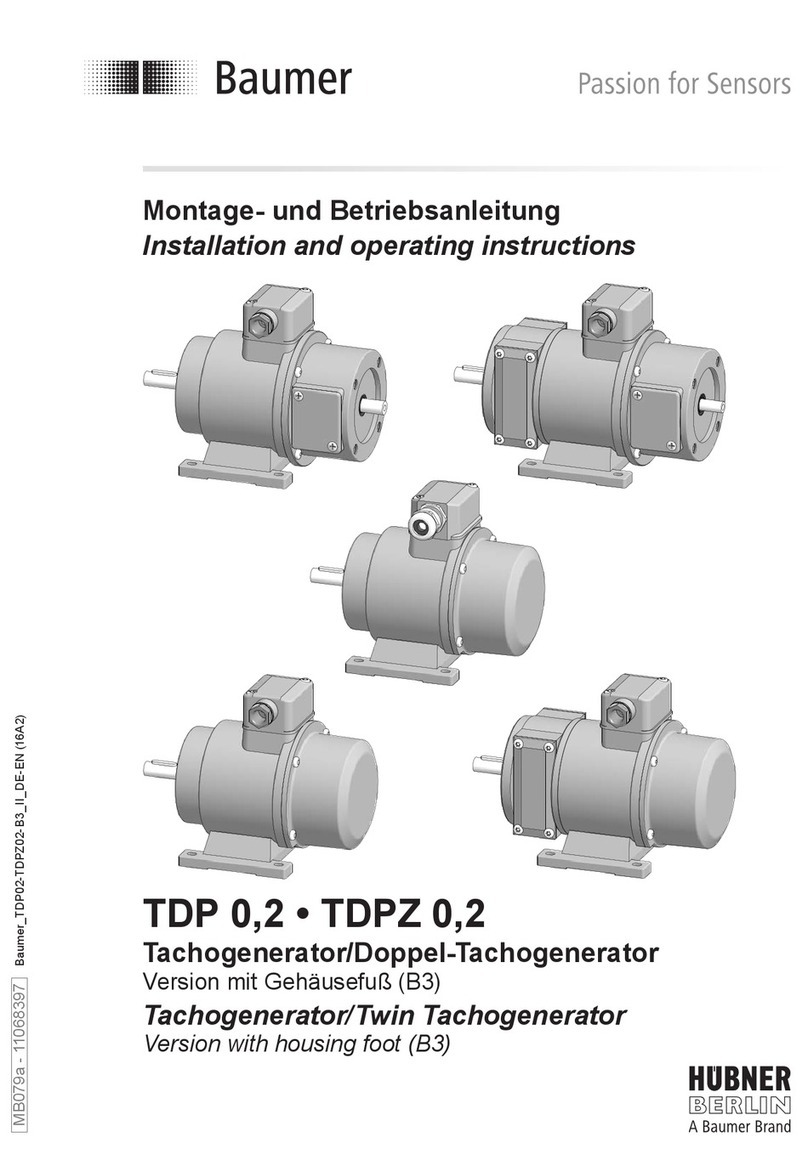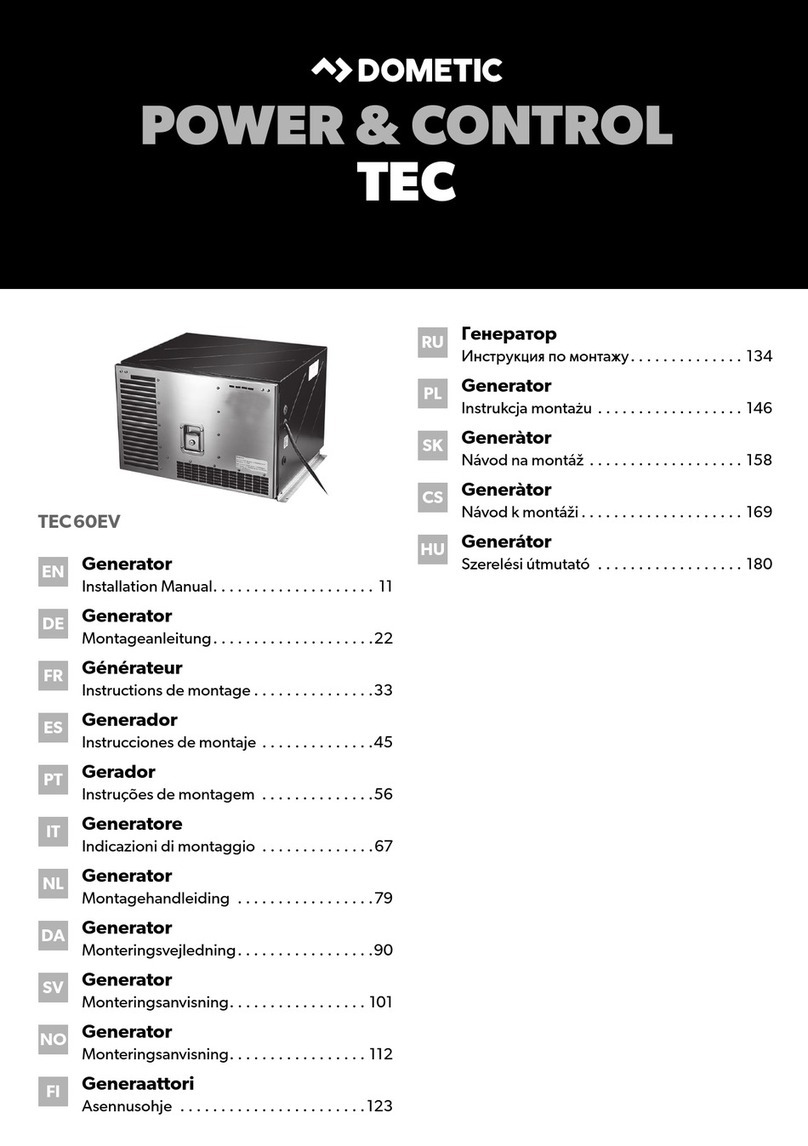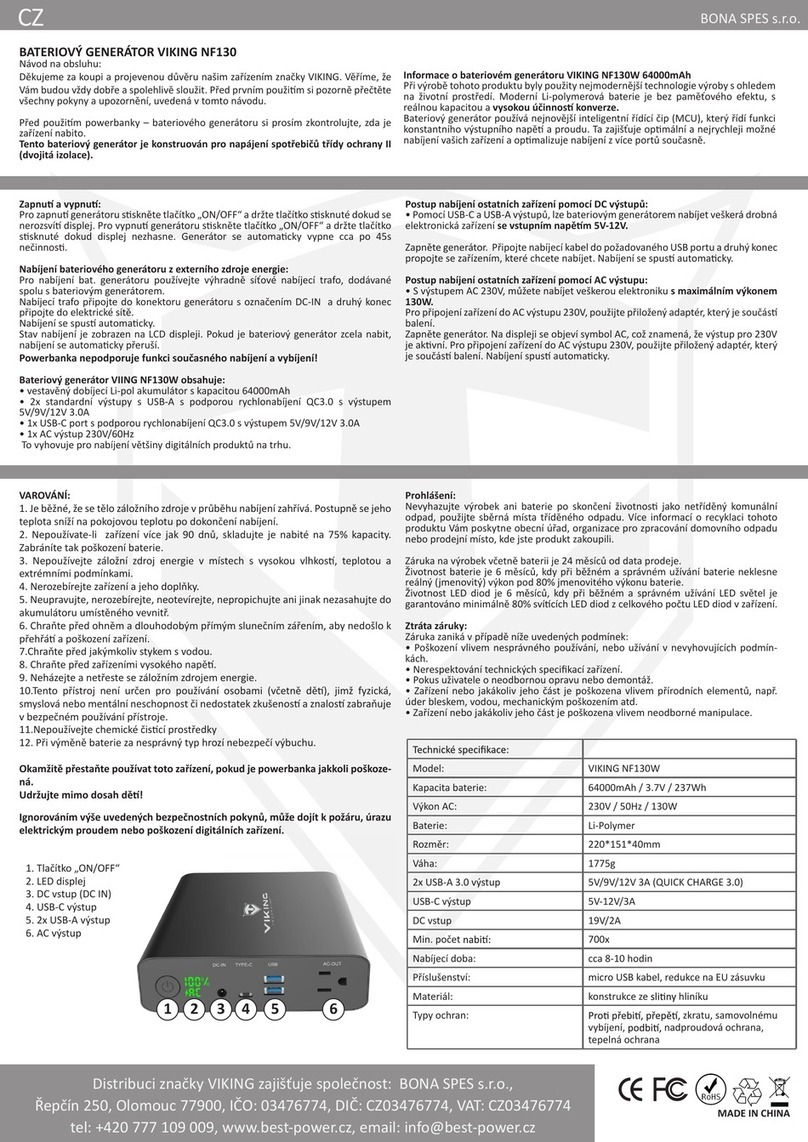SilentWind 12V User manual

INSTALLATION MANUAL
SILENTWIND
12V / 24V / 48V
www.silentwindgenerator.com


Dear Costumer
Thank you for buying our product. You have selected a new generation of wind
generators.
Compared to traditional wind generators, the essential advantages of our product
are:
– safety
– efficiency
– very low noise emission
You will also profit from our experience of more than 30 years with various wind
generators used in offshore sailing. For long distance cruising the availability of
electric energy without the possibility of grid connection is essential.
The SilentWind Team
Fair winds at any time
Please note that this manual is part of the product and must be read carefully.
Please study the information thoroughly before installing the SILENTWIND. This
manual should always be kept near the product and passed on to future owners.
This manual is particularly addressed to the person installing the SILENTWIND.
This person should be familiar with electric wiring and the use of appropiate tools.
Otherwise the SILENTWIND should be installed by a specialist.
3

Contents
Operation and use
Safety instructions
Mechanical risks
Electrical risks
Installation risks
Technical data
Wind generator
Electrical data
Mechanical data
Charge controller
Electrical data
Mechanical data
Dimensions
Installation recomendation
List of enclosed parts
Operation description
Diameters of cables
Installation
Getting started
Run and stop
Charging indicator
Check ups
Blades
Screw terminals
Bearings / Gaskets
Corrosion protection
Mounting construction
Electrical system
Maintenance
Trouble shooting
Atachments / Sketches
Warranti
Certificate of warranti
1.
2.
2.1.
2.2.
2.3.
3.
3.1.
3.1.1
3.1.2
3.2.
3.2.1
3.2.2
3.3.
3.4.
4.
5.
6.
7.
8.
9.
10.
11.
11.1.
11.2.
11.3.
11.4.
11.5.
11.6.
12.
13.
14.
15.
16.
5
5
5
6
7
7
7
7
8
8
8
8
9
9
11
11
12
13
15
16
16
16
16
16
16
17
17
17
17
17
19
22
27
4

5
It is certainly an advantage being able to use the renewable energy of both wind
and sun combined. You can charge batteries by making use of daylight and wind
24 hours per day. Our hybrid charge controller is suitable for both sources, wind
and solar (maximum 40A wind and 20A solar power).
You can also charge the batteries of an electric vehicle with this unit.
Further applications are:
Any location without an electricity grid connection, research units, traffic manage -
ment systems, emergency systems, street lamps, billboard illumination, projects in
developing countries, wireless LAN access points, holiday homes with inverters for
independent provision of electricity, wherever there is no grid connection available
or too complicated to install.
The SILENTWIND is light and aerodynamic. It is possible to connect several wind
generators if your energy demand is high. As noise emission is very low you can
operate the SILENTWIND in residential areas and on sailing yachts without annoy-
ing your neighbours.
Our charge controller HYBRID BOOST is suitable for 12, 24 or 48 volt usage and
can be connected to the SILENTWIND and solar panels.
Another advantage of the SILENTWIND is that it does not have any inbuilt control
electronics, which means that there is hardly any maintenance work on a function -
ing SILENTWIND generator. The electric power is connected to the charge control -
ler by 3 cables.
The hand laminated carbon fibre blades were successfully tested in a wind tunnel
up to wind speeds of 35 m/s (63 knots) according to DIN EN 61400-2. Therefore
you need not worry about the SILENTWIND in any storm conditions. For mainte -
nance work there is an additional manual stop switch.
1. Operation and use
Due to the high RPM and electric energy that wind generators create, care should
be taken in their operation. Therefore, thoroughly read the following safety instruc -
tions.
2. Safety instructions
Never ever try to touch the turning rotor system!
Never ever try to stop the turning rotor system manually!
For a number of reasons the turning rotor system must be handled with caution.
You cannot see the end of the blades in high wind speeds so you may not recog -
nise the inherent danger. Due to their aerodynamic shape the blades have very
sharp edges which can cause you severe injury in high wind conditions.
2.1. Mechanical risks

Make sure that you install the wind generator in a position where nobody can touch
the blades. On boats, always ensure it is mounted a sufficient height above the
deck.
The blades are produced from carbon fibre, which is extremely hard and therefore
potentially dangerous at high wind speeds. Always keep clear of the turning blades
in all circumstances. However, Blades can break due to ropes or other objects
touching them in very strong winds.
If one of the blades is damaged, immediately activate the BRAKE function using
the stop switch on the charge controller. If one of the blades is damaged, the rotor
system will be out of balance which may be a risk for the whole mounting construc -
tion. This has to be considered before mounting the wind generator in a safe
position.
Before you install the wind generator on a mast make sure that the 3-phase wiring
is disconnected from the charge controller and the three wires shorted together.
This has the same effect as the BRAKE switch on the controller but should be the
method used during installation. If possible, it is best to attach the hub with the
blades to the shaft at the very end of the mounting procedure. The mast must be
well secured so that it is safe in strong winds and adverse sea conditions. Addition -
ally, the mast and the mast stays should be assembled in such a way that vibra -
tions will be not magnified. Please ask a professional who is able to assess the load
that the mounting system can handle in strong wind conditions.
6
A running wind generator can generate a considerable AC voltage and current per
phase. Only connect the components if you are familiar with electric wiring. The
high voltage can cause serious injury and fire if you do not pay attention to safety.
Caution is recommended for people with cardiac pacemakers, etc. Never touch
the open end of the wires. The current when charging the batteries can reach more
than 30A. The whole wiring and connection points must be able to carry a current
of 40A. Information about suitable cable size is on page 9.
Warning: Wires with inadequate diameter can cause fire.
Make sure all wires are placed so that mechanical damage cannot occur. A
damaged cable is a severe safety risk. Install a fuse between the charge controller
and the battery positive pole; as close as possible to the battery. The required
value of the fuse depends on the rated current of the wind generator and solar
panels connected to the charge controller. Please contact a professional for this
purpose. We recommend a fuse with the double nominal current of the connect -
ed devices.
Warning: When connecting charge controller to the battery, sparks can occur.
A short circuit is to be avoided.
Always ensure sufficient ventilation!
2.2. Electrical risks

Only use or build mounting/support systems that can handle the load of the gener -
ator and the blast pressure of the wind in any condition.
Working on the mounting system should only be carried out on a calm day. Make
sure that nobody is close to the mast.
Disconnect the battery from the charge controller when working in the
system. The turning of the blades must be avoided by fixing one blade to the
mast. If not the charge controller will be destroyed.
Only persons with appropriate technical skills and knowledge should carry out the
electrical installation. Before a storm the SILENTWIND should be manually
stopped with the stop switch on the charge controller. In case of storms we recom -
mend fixing one rotorblade to the mast due to the risk of damage by flying objects.
2.3. Installation risks
3.1. Wind generator
3. Technical data
7
3.1.1 Electrical data
Type of generator
Rated voltage
Rated power
Rated peak power at
Start up speed
Start of charging
Permanent magnet generator, 3 phases, AC
12 VDC / 24 VDC / 48 VDC
420 Watt / 450 Watt / 500 Watt
14.5 m/s
2 m/s
2.2 m/s

8
3.2. Charge controller
3.2.1 Electrical data
System voltage
Max. power input wind generator
Max. current input wind generator
Max. power input solar
Max. current input solar
Max. open circuit voltage input solar
LCD + LED displays
12/24/48 VDC
600 W
40 A
300Wp
20/ 10/ 5 A
50VDC
W, V, A
3.2.2 Mechanical data
Weight
Package dimensions
Warranty
2.80kg (controller)
220x150x82mm
24 months
3.1.2 Mechanical data
Safety test in wind tunnel
Rotordiameter
Number of blades
Weight of blades
Material of blades
RPM range
weight
Package dimensions
Colour
Warranty
122 km/h without failure
1.15m
3
150g/blade
Carbon fibre, hand laminated
550 - 1700 Upm
6.8kg (Generator)
780x400x210mm weight: 10 kg
white RAL 9010, powder coated
36 months
– Charge and power management in the provided external hybrid-charge control -
ler Hybrid BOOST
– Maximum voltage adjustable for acid, gel and AGM batteries.
– Brake mode: electronically or manually with integrated Stop switch
(see enclosed manual)

3.3. Dimensions
9
3.4. Installation Recommendation
Cruising vessels/motorhomes equipped with wind generators typically have a
dedicated mast used as the mounting post for the wind generator. Silentwind is
very well engineered with quality bearings, housing and the whisper quiet blades
which make it one of the quietest small wind generators available. However, vibra -
tions generated by all wind generators will be transferred down into the vessels hull
or the motorhomes walls via the mast and the fittings. These are called ‘harmon -
ics’.

Therefore how the mast is fitted to the deck/motorhomes is one of the most
important parts of the installation.
In order to eliminate harmonics and get the best performance out of the wind
generator we recommend the following when installing on a yacht/motorhome:
1) Do not position Silentwind in line with a backstay or centered position on
your stern. It needs to be positioned above the bimini, coach house or any other
construction. To work most efficiently and with the lowest noise emission all wind
generators need ‘clean air’. During our own wind tunnel testing it was clearly
proven than any turbulence influenced wind generator performance. Any power
output date (Amps) are measured with the wind speed at the generator height not
on top of mast.
2) Avoid attaching the mast on any existing structure; for instance, a frame
which holds solar panels, biminis, rail fittings etc.
3) The three AC cables need to have the same diameter and the correct
mm2/AWG.
4) Make sure the electrical connections (crimping) are done 100%. Any
voltage drops can influence the control of brake functions. Use tinned copper
cables for marine installations.
5) The distance between the blade tips has to be the same. Take a measur-
ing tape and measure the distance from all three tips of the blades and adjust
accordingly. (Approximately 990 mm)
6) The arrow on the central nut should point towards generator head. Do not
over tighten the central nut.
7) All brackets, like mast clamps, need rubber strip insertions (3–4 mm thick -
ness and of medium density) between parts.
8) Use the supplied rubber insert between the generator and the mast.
9) An upper mast bracket should be installed approximately 20 cm below the
lowest part of the blades tip to stabilize the mast. The mast should be as short as
possible but high enough that the blades do not interfere with any objects and
nobody can get hit by the blades. Make sure that Silentwind gets ‘clean air’.
10) Use rubber inserts between deck and mast base, rubber washer for
screws or bolts to remove any latent vibrations before entering the hull/motor -
home.
11) After a week or so check the central nut which connects rotor hub to
shaft for tightness. Also check the 6 bolts which fix the blades to the hub.
12) To avoid any damage to the powder coated aluminum housing please
touch up any scratches, chipping of paint work during installation. Sea water will
penetrate the scratches and peel off the paint slowly.
13) As an additional precaution against electrolytic corrosion between
dissimilar metals, you can use ‘Duralac’ or ‘Tefgel’ on the 4 yaw bearing mast
bolts/nuts.
10

4. List of enclosed parts
All provided information is reliable. RULIS Electrica, Lda. will not be liable for
damages resulting from a wrong installation and/or operation of the wind genera -
tor. All specifications are subject to change without notice.
11
5. Operation description
All wind generators use the kinetic energy of the wind. This energy is captured by
the turning motion of the blades and consequently transformed into 3-phase AC
power. The energy output increases in line with the wind speed, exponentionally.
This means that doubling the wind speed generates octuple power. This must be
especially considered in storm conditions.

Our spbΩ blades are made of high-tensil carbon fibre and are hand laminated with
epoxy resin. This material provides the maximum consistency with the lowest
weight. This material is also used in Formula 1 and airspace industry. Therefore
these carbon fibre blades are extremely light, but can resist even the strongest
wind conditions. They have been successfully tested at German WindGuard –
according to (DIN EN61400-2 VDE 0 127-2) at windspeed of 122 km/h at 5480
RPM. This is an equivalent of sonic velocity at the tips of the blades. For everyday
use and safety reasons we have equipped the charge controller with an automatic
electronic and manual stop switch.
6. Diamaters of cables
12
Distance from wind generator to the charge controller in m
Cable cross section mm2 AWG
Distance from the charge contr. to the battery in m
Cable cross section mm2 AWG
70 - 110
50 - 1
70 - 110
---
0 - 9
6 - 10
0 - 9
16 - 6
10 - 19
10 - 8
10 - 19
25 - 4
20 - 29
16 - 6
20 - 29
35 - 2
30 - 44
25 - 4
30 - 44
---
45 - 69
35 - 2
45 - 69
---
System voltage 12 Volt
Distance from wind generator to the charge controller in m
Cable cross section mm 2 AWG
Distance from the charge contr. to the battery in m
Cable cross section mm 2 AWG
70 - 110
25 - 4
70 - 110
---
0 - 9
2.5 - 14
0 - 9
16 - 6
10 - 19
4 - 12
10 - 19
25 - 4
20 - 29
6 - 10
20 - 29
35 - 2
30 - 44
10 - 8
30 - 44
---
45 - 69
16 - 6
45 - 69
---
System voltage 24 Volt
Distance from wind generator to the charge controller in m
Cable cross section mm 2 AWG
Distance from the charge contr. to the battery in m
Cable cross section mm 2 AWG
100 - 150
10 - 8
100 - 150
16 - 6
0 - 29
2.5 - 14
0 - 29
4 - 12
30 - 79
4 - 12
30 - 69
4 - 12
80 - 99
6 - 10
70 - 99
10 - 8
System voltage 48 Volt

13
7. Installation
Before mounting the SILENTWIND onshore find a suitable position for the wind
generator. It is an ideal position if the wind flows against the blades without any
obstructions. The generator should be mounted as high as possible.
Fixed/land installation:
The height depends on the distraction of the wind by surrounding objects. You can
simply test this by fixing a 3 metre long by 4 cm wide strip of plastic at the top of a
4 metre (or longer) pole. You can use a second strip at 2 metre height. Note: This
does not apply when mounting the wind generator on boats.
If the upper plastic strip flows horizontally or up to 30 degrees from the horizontal
you have found the suitable position. In case the plastic strip shows more than 30
degrees from the horizontal or turns round the mast, the position is unsuitable. This
test should be carried out at moderate wind conditions and only gives an orienta -
tion.
We recommend doing a number test for an optimal site assessment. However, you
do not need to do this test if the wind generator is mounted far away from obstruc -
tions. You can also get help from a specialist on small wind generators.
Installation on a sailing boat:
The assembly height must be chosen in a way that no member of the crew is
endangered by the rotor blades. The mechanical fixation of the mast foot has to
withstand the mechanical loads occurring specially in rough sea conditions. We
recommend additional rigging to the sea rail or the deck of the ship.
Note: Please note that the SILENTWIND can never be fully efficient if it is not
mounted in the prevailing wind direction or distracted by obstructions. Therefore it
is important to find a position without obstructions!
Having found a suitable position, an appropriate mast with suitable hardware must
be chosen. The outer mast diameter must be 48mm and it should be made of
stainless steel or aluminum. Please also consider possible future maintenance
work. The mast with mounted wind generator should be able to take a wind blast
pressure of 250 Nm. Earthing of the mast is highly recommended. On boats you
can use the central earthing point for mast and engine. Ask a specialist for advice.
Once the mast is mounted you can start the relatively simple installation of the
SILENTWIND. First connect the 3 carbon fibre blades to the assembly hub (see
page 15, sketch 4) with the enclosed screws (page 16, sketch 9, assembly- and
safety instructions inside the rotor-blade box). The enclosed nylon discs protect
against electrolytic corrosion. The fastening torque is 7-8 Nm equivalent to a
weight of 7-8 kg on a 10 cm long lever arm, upright to the lever arm.

14
If the fastening torque is too high, this will destroy or damage the blades. If the
fastening torque is not high enough, the blades can get lose. A wrong fastening
torque is a considerable safety risk.
Before the final tightening of the blade screws, make sure that the distance
between the blade tips is exactly the same, in order to avoid vibrations. Move each
rotorblade in running direction towards the edge of the blade guide of the
hub. The running direction is clockwise looking from the front. Then fix the
blades as described above.The blades should then be ‘in balance’: The blades
have been balanced statically and dynamically.
In case of damage of only one blade you can buy a single one. When ordering one
blade, be sure to inform RULIS Electrica, Lda. on the exact weight of the undam -
aged blades.
An incorrect tightening torque represents a significant security risk.
Regularly control the fixation of the blades!
After attaching the blades to the hub, the set is fixed to the generator shaft with the
enclosed screw nut (use the enclosed hexagon socket screw key). After that, snap
the nose cone into place on the assembly hub. (see page 17, sketch 5, 6 and 7)
Then you must connect the three AC outlet cables which have to be led from the
SILENTWIND to the charge controller.
Attention: During this procedure the 3 AC wires of the extention cable at the end
must be connected together. Otherwise the rotor system may start running and you
can get injured.
Finally you mount the SILENTWIND on the mast. Fix the 4 hexagon screws to the
yaw clamp after inserting the rubber pad (see page 18, sketch 8)
When tightening the screws take care for a uniform, circumferential tightening of
the 4 screws. The tightening should be made with small increments in order to
avoid damaging the marine grade painting.

15
8. Getting started
Before getting your SILENTWIND started check the correct mounting and installa -
tion according to the following check list:
Connect to a 3-phase rectifier (optional) or the included charge controller. Please
read the charge controller manual for details on its installation.
Mast construction:
Optional;
Check according to instruction, especially all screw connections, bracing, vertical position.
Grounding and lightning protection according to local regulations?
Electric installation:
Check battery status and correct polarity.
Charge controller:
Charge controller securely fastened to the mounting location?
Battery connected with correct polarity, otherwise controller will be destroyed
Caution: Connect always first the battery to the charge controller.
Are all screw terminals firmly tightened?
Is stop switch in position “O”?
Fuse:
Fuse connected as close as possible to the battery?
STOP switch:
If a stop switch from a previous installation is installed in the connection cable at the AC- or
DC-side ot the charge controller, it must always be removed or secured against switching off. The
activation of the stop switch while the wind generator is running will immediately destroy the wind
generator and/or the charge controller.
Wiring:
All cables connected in line with plan? Check the polarity of all wires in the screw connection poles.
Is the 3-phase cable of the SILENTWIND connected to the charge controller? Are the cables
correctly crimped and is the strain relief inserted?
Yaw shaft:
Is the rubber pad well placed?
Rotor blades:
Mounted in line with instructions?
Assembly hub:
Is the assembly hub fixed to the generator shaft? Is the central screw nut fastened with 30 Nm?
Test OK
Test OK
Now you can go ahead!

Safety first!
16
9. Run and stop
Switch the enclosed stop-switch or the stop-switch of the charge controller to
position RUN. If the wires are correctly connected to the battery (without having
mixed up the polarity) the SILENTWIND should start charging if windspeed is
sufficient. You can control this on the LCD display of the charge controller.
10. Charging indicator
The charging amount is shown on the display of the charge controller.
11. Check ups
The following check ups should be carried out at regular 12 months inter-
vals:
Your SILENTWIND was constructed for long term use without any maintenance.
However, simple and regular check ups ensure the necessary security.
Before you start the check up, make sure the blades are stopped and the battery
is not connected to the charge controller.
11.1. Rotor blades
Check if the blades show damages like broken edges, damaged surface or cracks.
If you notice any damage, the generator must not be used any longer. Check the
screwing one day after mounting and after that every 3 months. Eventually then
you can turn to a longer interval.
11.2. Screws
Check that all accessible screws are correctly fixed. Especially the hexagon screws
from the hub, the central shaft nut and the fixing of the mast must be checked (see
page 17, sketch 4, 5, 6, 7 and page 18, sketch 8, 9).
11.3. Bearings and gaskets
The bearing of the generator shaft and the yaw bearing of the shaft are permanent -
ly lubricated. Please check these bearings for free movement, bearing play and
watertightness. Deficient bearings must be replaced.

17
11.4. Corrosion protection
The complete housing is made of seaworthy aluminum and additionally powder
coated. If the outer layer is damaged, there is a risk of corrosion. Please paint these
spots with suitable varnish (RAL9010).
11.5. Mounting system
Check the mounting system for stability and absence of loose screws (if applica -
ble).
11.6. Electrical system
Please first stop the SILENTWIND generator so that all wires carry no voltage.
Check if all connections are properly fixed and not corroded. If corroded they must
be removed and treated with contact spray. Give special attention to the battery
connections: they must be clean and greased with Vaseline. Check the battery in
line with the instructions of the producer and (if necessary) refill with destilled
water. In the case that more than one battery is used check if all batteries have the
same capacity and state of charge.
12. Maintenance
Maintenance of the SILENTWIND is not necessary.
The SILENTWIND is produced for troublefree long-term use.
13. Trouble shooting
In case of problems, however, these can be easily solved by using the following
check list:
Wind generator doesn´t start to run:
Not enough wind
Stop switch activated
Generator shaft sluggish
Possible cause
Measure the wind speed
(Anemometer)
Turn manually
Test
Wait for more wind, start up speed from
2m/s
Switch to RUN
Connection wind generator- charge
controller damaged, short circuit of AC
cables, short circuit of generator,
customer service
Solution

18
Wind generator doesn´t charge:
Not enough wind
Electric wiring interrupted
Fuse is blown
Carbon brushes in the yaw bearing
have no contact
Possible cause
Measure the wind speed at the rotor.
(Wind speed on the main mast-top
may be higher)
Check wires, connections and gadgets
Check fuse
Check carbon brushes and springs
Test
Start up of charging depends on the
battery status, check the adjustment of
the charge controller
Replace damaged wires or gadgets
Replace fuse or cool down the
automatic circuit breaker
Replace carbon brushes and reactivate
springs
Solution
Battery is not fully charged:
Old, damaged battery deficient
Fuse blown
Charge controller wrongly installed
Charge controller stop-switch is in
position STOP
Deficient generator
Deficient charge controller, mix up of
polarity
Possible cause
Test battery status and liquid of every
battery
Check fuse
Check in line with manual
Switch stop switch in position RUN
Check AC voltage, AC screw terminals
Check adjustments according to
instructions
Test
Replace battery,
refill destilled water (not necessary for
gel- or AGM-battery)
Replace fuse,
find cause of deficiences
Correct installation
Observe manual instructions
Check all 3 AC cables after
disconnecting from charge controller as
to short circuit
Repair customer service / replacement
Solution

19
14. Attachments / sketches
Sketch 1
Sketch 3Sketch 2

20
Sketch 7Sketch 6
Sketch 4 Sketch 5
This manual suits for next models
2
Table of contents
Other SilentWind Portable Generator manuals

